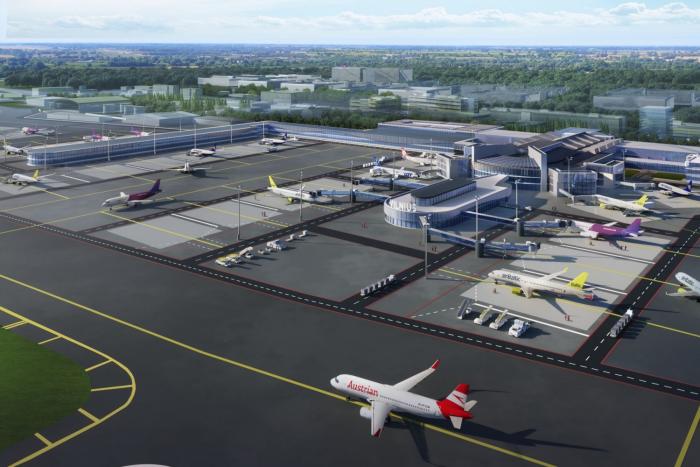Lithuanian Airports aims to develop a competitive model for its airports, improve efficiency and clearly map out the infrastructure development steps needed for Vilnius, Kaunas, and Palanga airports to handle 17 million passengers a year.
According to the Minister of Transport and Communications, Marius Skuodis, for the first time Lithuania is assessing in depth the potential of the aviation market, which is an important development for Lithuanian airports.
“Over the next few years, we are going to see a significant breakthrough – comprehensive changes in the network of Lithuanian airports that will significantly increase the role of air gateways in the country's transport system, improve Lithuania's accessibility and passenger experience, and contribute to economic growth.
“Some of the projects are now well underway and are progressing rapidly to significantly improve the competitive position of our airports in the region in the near future. However, it is important to keep the momentum going and to anticipate now what we will do next, whether in a few years or a decade or two,” Skuodis said.
International consultants Royal HaskoningDHV (NACO) prepared the long-term master plan. Its team analysed data in different areas throughout 2023, modelled various possible scenarios for the development of Lithuanian airports, and assessed their strengths and weaknesses.
Near-term requirements
The master plan covers in particular the near-term work that needs to be done by 2030 to address the challenges of cramped infrastructure and to ensure an annual capacity of 10 million passengers across the network. In the longer term, it includes solutions to expand capacity at all three airports to serve 17 million passengers.
The construction of the new Departures Terminal at Vilnius Airport is underway. When it opens in the first quarter of 2025, it will not only drive the reconstruction of the old terminals, but the construction of another important project – the new arrivals terminal (T5). This solution will allow a 7-8 million-passenger capacity not only in Departures but also in Arrivals. This solution will ensure convenient baggage pick-up, as well as reducing the excessive movement of passengers between the terminal floors.

The design of the arrivals terminal in Vilnius should follow the modular development logic that has been applied to the new departures terminal. It is envisaged that the existing terminal infrastructure will be developed parallel to the apron and runway.
This year the company will launch an architectural tender for the integration of the oldest arrival terminal, with a view to starting the reconstruction work in 2025. The plan is to stop using this building for arrivals, but to expand the service and retail areas and make the infrastructure more passenger-friendly.
Additional recommendations
The master plan not only sets out a roadmap for adapting the current infrastructure to meet growing passenger numbers, but also provides suggestions on how the infrastructure can be made more efficient.
For example, all three airports have areas earmarked for the development of solar farms. Both Vilnius Airport and Kaunas Airport are planning to develop areas on the other side of the runway from the terminals for freight and aircraft repair and maintenance services. At Palanga Airport, the development of commercial and general aviation areas is planned parallel to the runway, on the side of the current terminal.
Synergies with national and municipal plans
Master plans for Lithuanian airports have been closely coordinated with other strategic transport projects in the country, one of the most important being the Rail Baltica railway line. Vilnius Airport terminals will be connected to this project by an underground railway, which means that a rail stop at the capital's airport is also planned to be built underground.

The Lithuanian Airports team actively engaged with other stakeholders during the development and approval of the strategic master plan. Vilnius, Kaunas city and district, and the municipalities of the coastal region were also involved in the process. Representatives of the municipalities were consulted on how the airport development projects fit in with their future plans. This was one of the priorities in the preparation of this strategic master plan, to ensure that the development of urban infrastructure and airports go hand in hand and bring the best possible economic and social returns.
Planned investments
From 2025, following completion of the departures terminal in Vilnius, investments of around €180m will be made in the reconstruction of the existing terminals and the construction of new terminals before 2052.
At Kaunas Airport, on completion of the forthcoming terminal expansion, further investment in new terminals will be undertaken between 2025 and 2052. The estimated cost is around €50m.
Investments in the terminals at Palanga Airport over the same period could amount to around €20m, Lithuanian Airports said.

